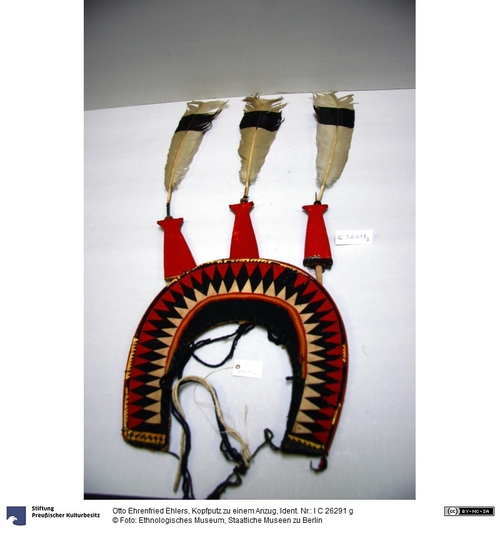Der Kopfschmuck besteht aus gebogenem Holz, auf dem Nashornvogelfedern befestigt sind. Der Nashornvogel hat eine besondere Bedeutung für die Naga. Nur sozial hochstehende Männer durften sich mit den Federn schmücken. Der Kopfschmuck wird von Männern der Angamai-Naga bei Tänzen getragen und gehört zu den Kleidungsstücken I C 26291 a-k
Eintrag im historischen Hauptkatalog: "Tanzkostüm"
Sammler: Ehlers, Otto Ehrenfried
Historische Bezeichnung des Herstellungsortes: Assam
en

